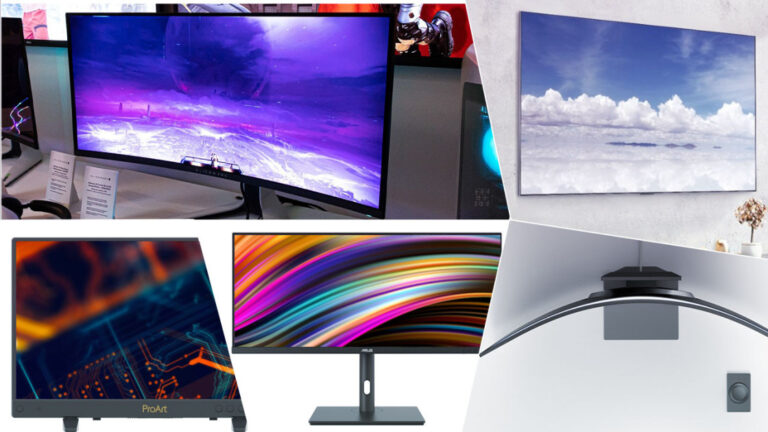
[ad_1]
CES 2022 may not have been the in-person, shoulder-to-shoulder event we were all hoping for. (Even taking a trip to Las Vegas could qualify as a return to “normal” these days, which shows you how much the world has changed!) But that didn’t stop monitor manufacturers from pushing the limits of what’s possible and showing us, in mostly virtual fashion, what’s coming for PC displays and TVs in ‘22.
While many monitors we saw for the content-creator and gaming crowd were iterative updates, a handful were potentially revolutionary attempts to change what we know about PC-display forms and factors going forward. And those improvements aren’t stopping at monitors; TVs will be seeing the benefit from them, too.
So…what were some of the coolest monitors and TVs we saw (virtually) this year? Let’s dive into the good stuff. —Chris Stobing
Samsung Odyssey Ark
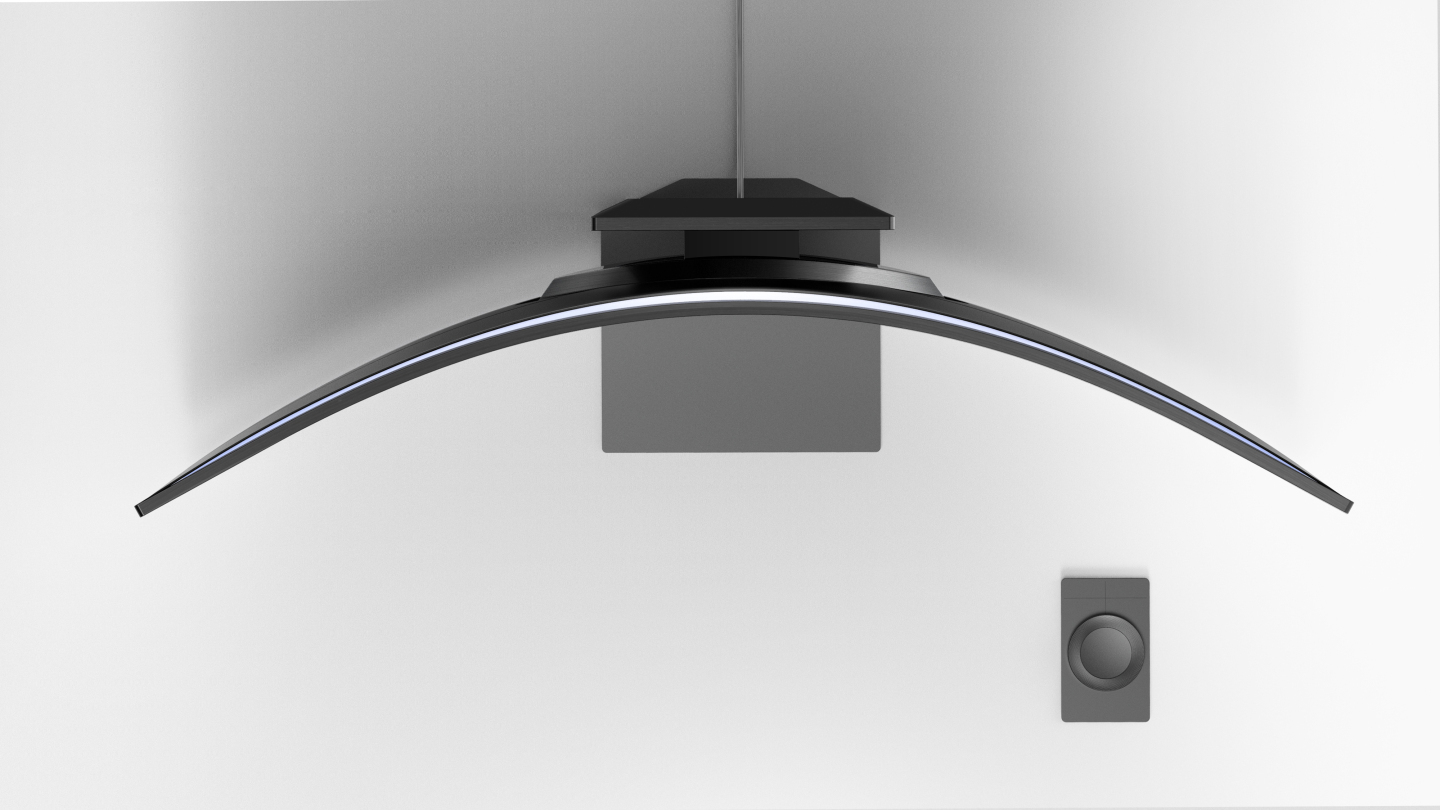
We don’t know what it’s made out of, the full list of specs, or even how much it’ll cost. But none of that really seems to matter once you lay your eyes on the Ark. A new concept monitor from Samsung (which the company says it has plans to release at some point), the impossibly thin Samsung Odyssey Ark 55-inch gaming monitor promises a revolution in immersive gaming.
Boasting a staggering 1000R curvature (that’s a really tight bend), the Ark is still in early development. However, the tech press did get an exclusive sneak preview of the screen in action to show that it does—at least in principle—work.
The major draw of the Ark will be its thin and light profile, something no curved monitor or TV has managed yet. Samsung claims it achieves this effect using a “next-generation flexible screen tech,” but mum’s the word beyond that. Plus, it lets you tile multiple video inputs into a variety of layouts, so you can stream Fortnite while keeping an eye on your stock ticker. We’ll keep an eye out (and the lighthouse beam on) for more news about the Ark’s arrival onshore throughout 2022. (Read more about the Samsung Odyssey Ark here.) —CS
Samsung Odyssey Neo G8
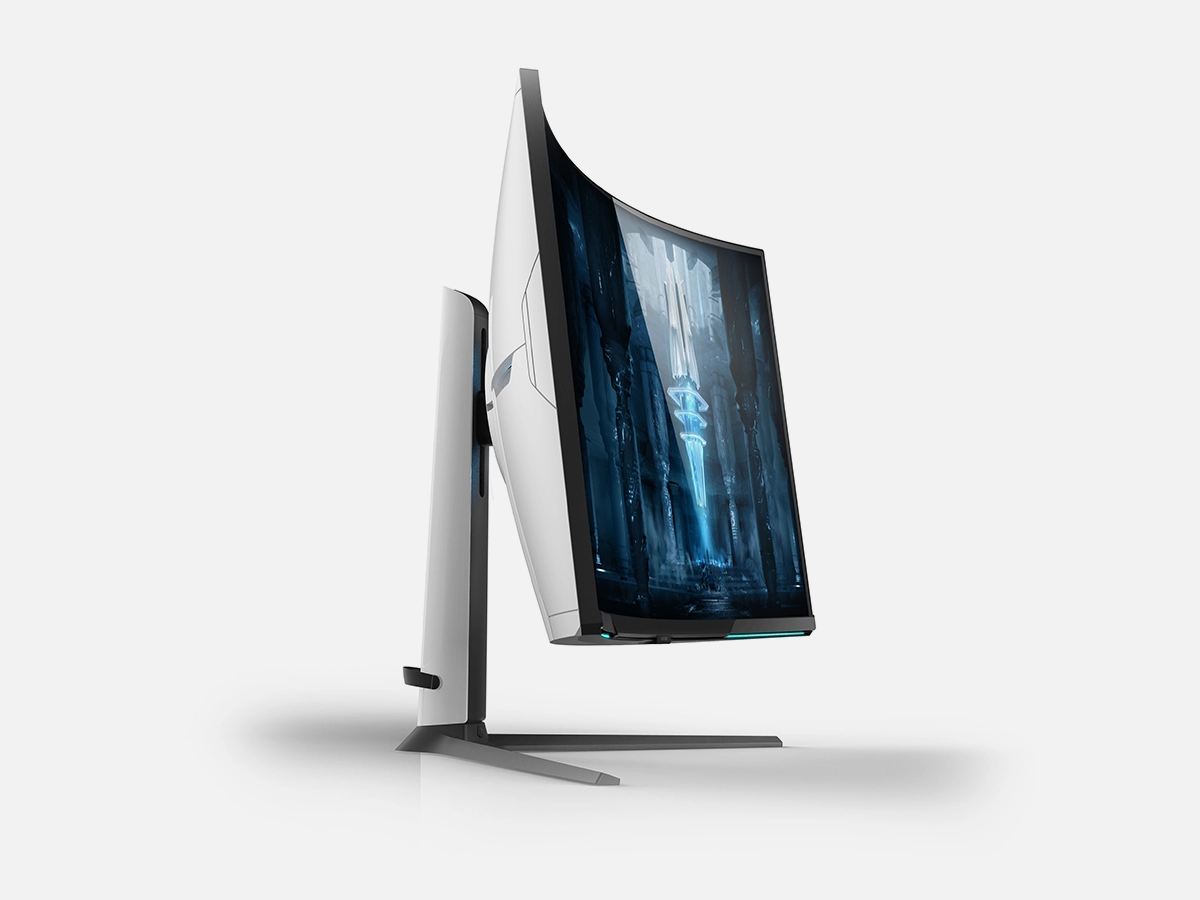
The Samsung Odyssey Ark may have stolen the show, to our eyes, but other entries like the Odyssey Neo G8 weren’t exactly hard to look at, either. The Neo G8 adds another option to Samsung’s rapidly growing stable of gaming monitors in the Odyssey line, boosting the resolution to 4K while setting a new refresh-rate record in the category: 240Hz.
While 1440p monitors just got the 360Hz treatment, keeping them a stride ahead in the esports high-refresh races, the introduction of a 4K 240Hz option bridges a gap between the two tiers that has existed for some time now. If you have a GPU that can handle it, 4K/240Hz displays are now on the horizon, and the Samsung Odyssey Neo G8 represents the tip of that coming spear. (Dive deeper into what we know about the Neo G8 here.) —CS
Alienware 34 QD-OLED
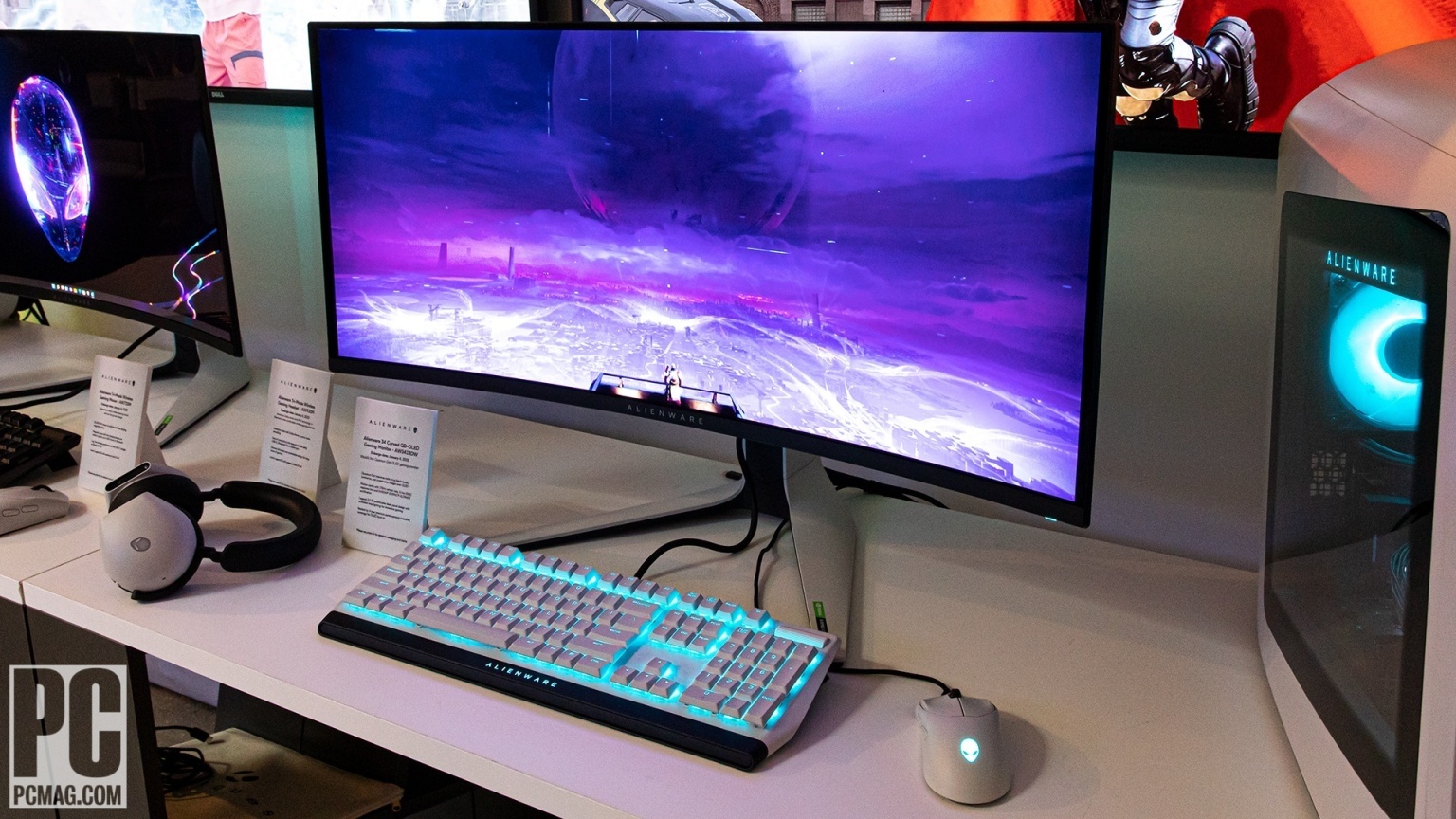
(Photo: Molly Flores)
Gamers who play on ultrawide monitors have almost always been the last of the bunch to get top-end features added to the category, usually looking ahead to the 4K segment to lead the charge on whatever’s the latest and greatest. It’s taken years just to get to 200Hz, and even the newly announced Alienware 34 QD-OLED gaming monitor maxes out a paltry 175Hz (kidding, of course).
But maxed-out refresh rates aren’t what the Alienware QD-OLED was made for; it was made to look gorgeous. Every one of our reporters who attended Dell’s pre-brief event for CES 2022 agreed; the panel was simply stunning to look at, and a couple missing hertz isn’t going to diminish your experience while gaming on it.
We weren’t the biggest fans of Alienware’s last attempt at an OLED gaming panel, but here’s to hoping the company has improved on that last attempt with the help of quantum-dot technology and its brightness-boosting abilities. (Check out our hands-on time with the Alienware 34 QD-OLED here.) —CS
MSI MEG 271Q Mini LED
Monitors based on mini LED technology, which help to boost the contrast of HDR-ready TVs and monitors, began with a trickle a few years ago, though CES 2022 is the year where the cracks on the dam finally started to spread. Content creators and the business set alike have their share of mini LED-based options in both monitors and laptop displays (see, for example, the Apple Pro Display XDR and the MSI Creator 17). But now, gamers will finally get their hands on the contrast-enhancing tech for themselves with the launch of MSI’s upcoming 1440p MEG 271Q Mini LED.
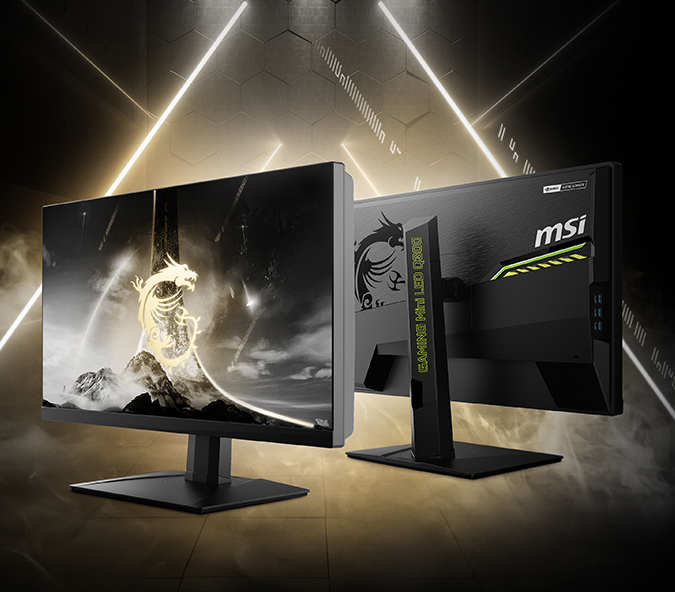
The monitor promises many of the top-end specs we’ve come to expect; a 300Hz refresh rate and Nvidia G-Sync Ultimate, for starters. But this time around, it also features what MSI claims will be 1,000-plus local dimming zones, a number that could promise better performance in multiplayer games, if the marketing is to be believed. The better your contrast, the more your enemy will pop off the screen (in theory, at least). No word on pricing or availability yet, so stay tuned. (Check out our coverage of the MSI MEG 271Q Mini LED, along with the rest of the new 1440p selections announced at Nvidia’s presser, here.) —CS
Asus ProArt Display PA348CGV

Although the ProArt Display PA348CGV and the Editors’ Choice-winning Asus ProArt PA34VC Professional Curved Monitor share some basic specs—they both have ultrawide 34-inch IPS screens with 3,440-by-1,440-pixel native resolution—in other ways the PA348CGV leaves that earlier model in a cloud of pixels. It is brighter (rated at 400 nits) than its predecessor, and it has a wider color gamut, covering 98% of the DCI-P3 color space. As is typical of pro monitors, it is factory calibrated for a delta E of less than 2, ensuring accurate colors. It also boosts its frame rate to 120Hz to provide smooth video rendering.
As you’d expect, the PA348CGV has a generous mix of ports. In addition to a standard monitor stand, Asus also includes a C-clamp desk mount, which can help save desk space.
The big advantage of an ultrawide large-screen monitor for creative work is that you can compare two or more reasonably large versions of the same image on the screen at once. The ProArt Display PA348CGV lets you do this with aplomb, rendering a bright image with accurate colors. (Read more about the PA348CGV here.) —Tony Hoffman
Recommended by Our Editors
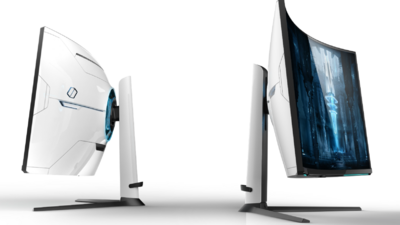
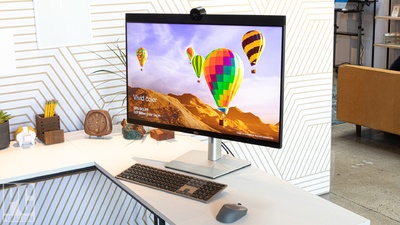

Asus ProArt Display PA169CDV
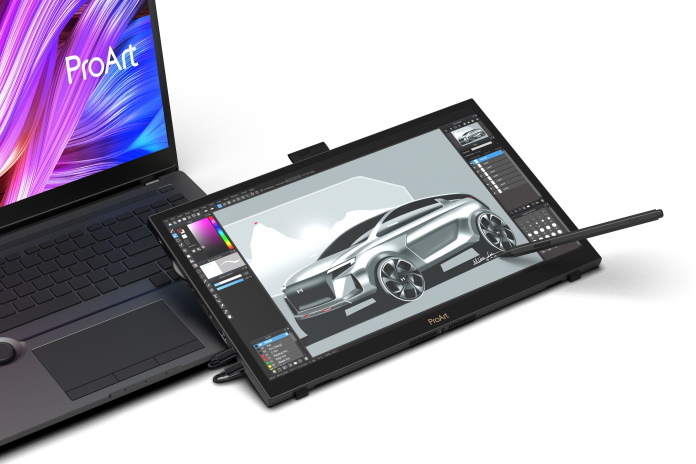
With the ProArt Display PA169CDV, Asus has taken the traditional portable monitor and tricked it out to appeal to creative pros. The PA169CDV packs a 15.6-inch 4K UHD (3,840 by 2,160) IPS touch screen with a rated 400-nit brightness. It is factory pre-calibrated to provide a Delta E color difference of less than 2, and it offers 100% coverage of the sRGB and Rec. 709 color spaces.
Visually, two things distinguish the PA169CDV from other portable monitors: a wheel on the left side of the monitor, which is the Asus Dial, and a leather loop on top, which holds the ProArt Pen. The Asus Dial is a control that gives you quick access to the most commonly used functions in Adobe After Effects, Photoshop, Premiere Pro, and Lightroom Classic. And the ProArt Pen is an active stylus that uses Wacom’s electromagnetic resonance (EMR) technology, which creates a magnetic field that captures the movement and pressure of every stroke of your stylus. Wacom EMR also passes power through the LCD panel, so the ProArt Pen doesn’t need a battery.
The PA169CDV is an attractive option as a secondary or portable monitor for creative professionals. Although it has wider color coverage than conventional portable monitors, we’re still waiting for a mobile display that does justice to the Adobe RGB color space. (Check out more on the PA169CDV here.) —TH
Sony Master Series XR-A95K
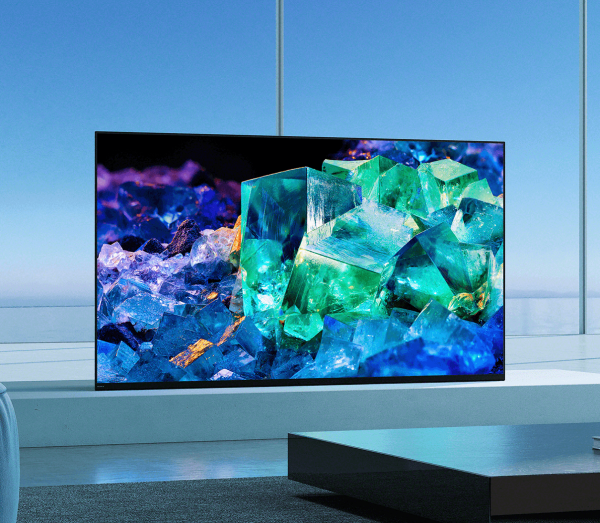
Samsung showed off the panel technology with its QD-Display, but Sony looks like the first company to be heading to market with an OLED TV enhanced with quantum dots. The Sony A95K uses a QD-OLED panel, which means it combines an organic light-emitting diode (OLED) layer with a layer of quantum dots, nanotechnology that can enhance color range and brightness. Both concepts have been used in TVs before, but now we’re seeing them combined, which could mean new peaks in picture quality. (Read more about the XR-A95K here.) —Will Greenwald
LG C2 (42-Inch) and G2 (97-Inch) OLED TVs

The LG C1 OLED was one of our favorite TVs of 2021, and its successor is expanding its range of sizes by getting smaller. The LG C2 will be one of the first OLED TVs available in 42 inches, and that means it could be a very consumer-friendly alternative to a large gaming monitor. It’s 4K and 120Hz, and if it’s anything like the C1, it will have support for both Nvidia G-Sync and AMD FreeSync, and it will perform very well for games. At 42 inches, it should be fairly affordable, too.
In the other direction, though, LG is making the biggest consumer OLED TV yet with the expanded G2 line. The “Gallery Design” TV (pictured above) will be available in sizes up to a staggering 97 inches, which is massive for any TV but particularly impressive with its more expensive OLED panel.
The G2 is effectively identical to the C2 in specs, so it should have similar performance and features, but with a much slimmer design for nearly flush-to-the-wall mounting. That size and that style indicate it’ll probably be very expensive, though. But did we have to tell you that? (Read more about the LG C2 qnd G2 here.) —WG
[ad_2]
Source link : https://www.pcmag.com/news/the-best-monitors-and-tvs-of-ces-2022